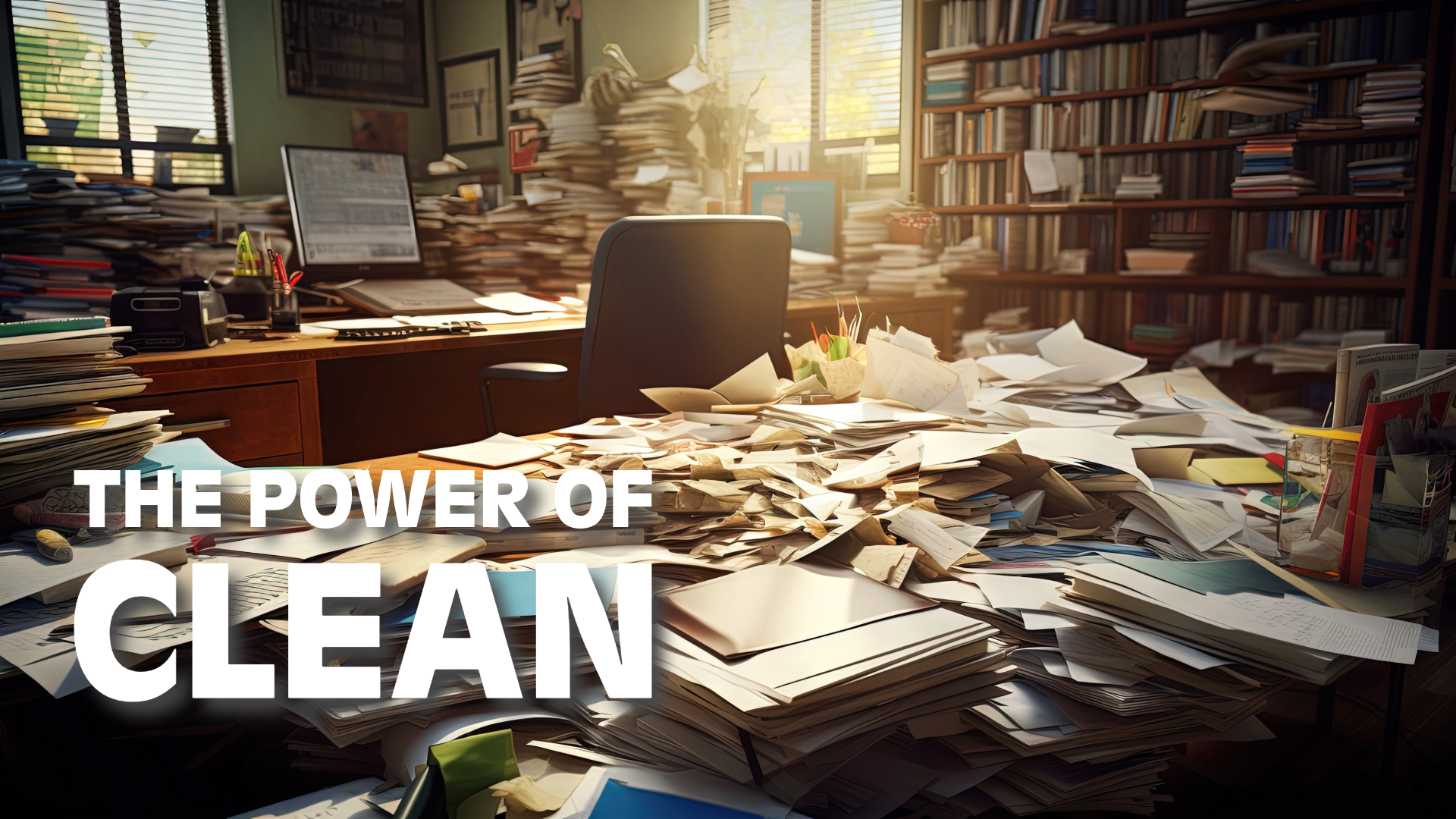A Clean Workspace Is More Than Cosmetic
Amidst the pursuit of advanced technologies and complex management strategies, the significance of a clean workspace often goes unnoticed. Yet, this is not a trivial oversight in corporate agendas; it’s a missed opportunity to create a work environment that bolsters employee well-being, fuels sustained productivity and distinguishes a company that values its human assets.
The Impact of Cleanliness on Productivity
Efficiency in the workplace extends beyond time management and streamlined processes; it’s also about the work environment. Numerous studies have unequivocally established a direct correlation between a clean and organized workspace and heightened productivity. A clutter-free setting minimizes distractions, enabling employees to concentrate more effectively on their tasks.
The Science Behind a Tidy Desk
Psychologist Robert Sommer found that an orderly environment can significantly influence behavior. In our case, a clean workspace empowers employees to make clear, efficient decisions by reducing the cognitive burden imposed by visual chaos. This directly correlates to a quantifiable gain in output and accuracy.
Clutter Equals Cognitive Overload
Adam Grant, an organizational psychologist, argues that employees who endure a disorganized environment struggle with basic decision-making functions. This dissonance, the subtler cousin of multitasking, drains cognitive resources better allocated to critical thinking.
The Psychological Argument for a Tidy Space
Employees’ mental health is a crucial yet often undervalued factor in corporate settings. A clean workspace can be a sanctuary from the tumult of professional life, a physical location that promotes mental clarity and reduces stress.
Stress Reduction through Orderliness
Marie Kondo’s KonMari method has resonated with millions, demonstrating an innate human desire for order. This sentiment is not mere whimsy; it has empirical backing. A Princeton University study showed that a disordered environment elevates stress levels among its inhabitants, whereas an organized space promotes calm and control.
The Untapped Crossover of Cleanliness and Creativity
Neuroscientist Kathleen Vohs found that neat and tidy spaces encourage individuals to make choices that promote convention and safe thinking. However, the inverse is not necessarily true. Creative problem-solving tasks, those that often require ‘thinking outside the box,’ are best served by a modicum of disorder. This correlation between mess and creativity hints at the nuanced relationship between workspace cleanliness and the kind of tasks best suited for the given environment.
Economizing Through Cleanliness
Beyond the intangible assets of productivity and peace of mind, a clean workplace directly impacts the bottom line by reducing costs associated with absenteeism and healthcare.
Illness as a Business Disruptor
The Center for Disease Control cites that, on average, American workers miss 6.2 days of work each year due to the common cold alone. The spread of illness is hastened in unclean workplaces, serving as a catalyst for these figures. By maintaining high cleanliness standards, companies can significantly mitigate the spread of germs and illnesses, thereby reducing the incidence of absenteeism and its subsequent impact on productivity.
Healthcare Costs and the Cleanliness Quotient
It’s easy to dismiss the correlation between office cleanliness and healthcare costs as inconclusive or insubstantial. However, the data is robust; the American Journal of Infection Control found that investment in workplace cleanliness led to a 53% reduction in healthcare-associated infections. By extrapolation, this translates to a stark reduction in monetary loss attributable to medical costs.
Leveraging Technology for Workspace Health
Technology is a potent ally in the ongoing battle against the waste of daily business. From sophisticated sensors that indicate traffic-heavy areas needing more attention to advanced cleaning solutions deployed via robots, firms are witnessing the dawn of what we might call the ‘Hygienic Union’, a symbiotic relationship between technology and cleanliness.
The Rise of SmartClean
The incorporation of smart technology isn’t just another organizational trend. It is a strategic advantage with measurable returns. IoT-enabled devices can monitor various facilities’ real-time usage and state, offering predictive frameworks for cleaning schedules. Drones and automated cleaning systems are rising, outclassing human dexterity and endurance in repetitive, labor-intensive tasks.
Technological Solutions to Psychological Conflicts
Consider the instance of a ‘cleaner-seeking’ phobia, a legitimate fear for some employees that hampers work functionality. In introducing autonomous cleaning agents, companies diplomatically sidestep the confrontation between personal space and professional responsibilities, thereby reducing covert stressors that impede workflow.
Workspace Cleanliness in the Post-Pandemic Paradigm
The current global health crisis has recast cleanliness as a guardian of productivity and health security. The days of workplace cleanups purely to assuage aesthetic considerations are behind us. The future workspace will be one in which health and safety are integral not just to the business ethos but to the architectural makeup of corporate spaces.
Architecture as a Protagonist of Cleanliness
The post-pandemic office must be rethought, perhaps even reconstructed, with cleaning and sanitation in mind. Design elements that promote easy and thorough cleaning will become more prevalent. This paradigm shift towards ‘cleanable architecture’ marks a departure from the current trope of spaces designed for visual appeal with functional cleanliness as a secondary, reactionary concern.
The Ethical Responsibility of Corporates
The cleanliness of the workplace is a direct reflection of corporate values. In the wake of COVID-19, employees will more closely associate a clean workspace with their employer’s care for their health. Therefore, companies that invest in maintaining a safe, hygienic workplace stand to gain not just physical well-being but also their workforce’s loyalty and trust.
The notion that cleanliness is next to godliness is historically linked with religious and moral precepts. Today, it finds a new context within the confines of the office, an ethos that asserts that a clean workspace isn’t just about maintaining order — it is about respecting the humanity behind the labor. The call to action is clear. Companies must shift their thinking, conceiving cleanliness not as a necessity born of obligation but as the lynchpin of a dynamic, cohesive, and innovative workspace. The competitive advantage of a clean, well-organized environment is not just a cosmetic one; it’s foundational to success in the emergent future of work.

